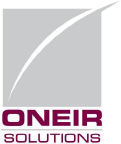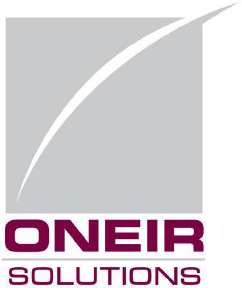To balance the Accounts Receivable sub-ledger to the General Ledger Control Accounts is fairly simple, but may require some manual calculation. Normally there will be no difference between the two totals. To arrive at the balanced totals there are two methods.
Both methods require that you determine whether you are using a separate General Ledger account for deposits taken from customers or not. If you are unsure of your company’s set up, you can find out by following the steps below.
1. Go to the General Ledger Menu.
2. Select ‘Set up special accounts’
3. On the first screen note the account number entered on the line for Accounts Receivable.
4. Proceed to page 2 and then note the account number entered on the line for Deposits from customer.
If the account number from 3 and 4 are the same, then deposits and receivables are posting to the same account. If the account numbers are different, the deposits and receivables are posting to different accounts.
There is one other factor that will affect balancing the sub-ledger and control account. Do you use point of sale? If so, do you use the customer code ‘CASH’? If you answer is ‘Yes’ to these questions, then you must obtain the total of outstanding deposits recorded under the customer code ‘CASH’ as of the date you are balancing. As customer ‘CASH’ is a special code that does not record balances and is not a customer per se, the deposits will NOT be included on any Accounts Receivable report. However, there is a report that will print the outstanding deposits for ‘CASH’. The report MUST be printed on the date you are going to balance, as it is NOT date sensitive (.i.e even if you are not balancing your books on your year-end date, you should print this report so you have a record of the outstanding total as of the year end date.) NOTE: YOU CANNOT BACKDATE THIS REPORT, EVEN IF YOU CHANGE THE SYSTEM DATE. It will only print for the current outstanding transactions in the data at the time of printing. Once a deposit is used up it will NOT be on the report, again.
The report comes in two forms, both located on the Point of Sale report menu, ‘Print the layaway transactions report’ and ‘Print the rental transactions report’. The reports are nearly identical, the only difference being is they report on the two different transaction types exclusively. On the date you wish or will wish to balance, print these two reports. There are two options that you will be concerned with (aside from Division if you are balancing one division or more).
The first is the report type. Choose either Detail outstanding layaways/rentals or Summary Outstanding layaways/rentals. As you are only concerned with the deposit totals and not the products, we strongly suggest printing the Summary report as it will save greatly on the paper used.
The second is the Customer. When asked to “Please specify a customer” enter the code ‘CASH’.
All other questions should probably be left as the default answer.
These two reports will give you the total outstanding deposits on layaways and rentals that belong to customer ‘CASH’. No matter how your special accounts are set up, the total of these two reports is essential to balancing the sub-ledger to the GL control account(s).
Depending on your preference there are two equally acceptable ways to balance. Choose one or ask your accountant what they would prefer. Either one will arrive at the same end result of a balanced sub-ledger and control accounts.
Method 1 Balancing the General Ledger to the Accounts Receivable (Both Receivables and Deposits) Report.
In the Accounts Receivable, print The Detail Accounts Receivable Ledger for the date you wish to balance and include both Receivables and Deposits. (Answer default of ‘B’ to second question on report criteria.)
In the General Ledger, print the Account Detail report (summary will be fine) for the account number(s) noted for Accounts Receivable and Deposits from customers in the special accounts.
If you are using Point of Sale, get the total outstanding deposits for customer CASH as described in detail above.
You are now ready to balance. The worksheet below describes the method.
Total Outstanding From Accounts Receivable Ledger: $__________________
Less O/S CASH deposits: $__________________
Total Adjusted A/R Balance $__________________
General Ledger Accounts Receivable account balance $__________________
Less General Ledger Deposits From Customers balance $__________________
Total Adjusted GL A/R Balance $__________________
The two adjusted totals should agree exactly.
Method 2: Balancing Receivables and Deposits to Individual Control Accounts
In the Accounts Receivable, print The Detail Accounts Receivable Ledger for the date you wish to balance once for Receivables only and then again for Deposits only. (Answer ‘R’ and ‘D’ respectively to second question on report criteria.)
In the General Ledger, print the Account Detail report (summary will be fine) for the account number(s) noted for Accounts Receivable and Deposits from customers in the special accounts.
If you are using Point of Sale, get the total outstanding deposits for customer CASH as described in detail above.
You are now ready to balance. The worksheet below describes the method.
Total Outstanding From Accounts Receivable Ledger (Receivables only): $______________
General Ledger Accounts Receivable account balance $______________
These two totals should agree exactly.
Total Outstanding From Accounts Receivable Ledger (Deposits only): $______________
General Ledger Deposits From Customers balance $______________
Add O/S CASH deposits: $______________
Total Adjusted GL Deposits Balance $______________
The adjusted balance total should agree exactly with the deposits only report.


